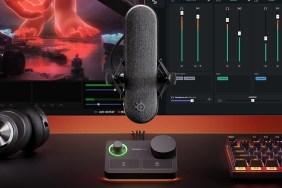Second edition galore.
It is difficult for the mind to encompass more than two entirely different ideas at once. Games that blend genres together tend to take an extra degree of mental effort to understand. Culdcept Saga, which crosses two already complex styles of gameplay, truly bends the mind into an unruly shape. After two weeks, my brain feels like the ass-end of a Möbius band.
[image1]Culdcept Saga can be briefly described as a mix between Monopoly and Magic: The Gathering. This is ultimately inaccurate, but it does give you a sense of the game’s scale and intricacy. To say that the gameplay is complex is like saying the ocean is kinda deep.
The major component of Culdcept is a deck of cards. Like Magic, the player has a deck full of creatures, items, and spells. Creatures are played to claim territories or to attack claimed territories. Items are used in attacks to buff creatures, and spells can be used from the main game board to cause damage, heal damage, or cast a variety of effects on creatures or the land they’ve claimed.
Territories are organized by elemental type: fire, earth, water, and wind. To add some extra fun to the mix, there are neutral lands, which change elements when claimed, and lands which are all types at once. To claim a land, you need to walk onto it after rolling a pair of dice and then play a creature card from your hand. Playing a creature whose element matches the land’s elemental type increases the creature’s strength. A player who lands on an enemy’s claimed territory is charged a toll, unless the player successfully attacks the land.
Where Monopoly’s system is founded upon a steady scale of increasing property values along the length of the board, Culdcept’s territorial control is founded upon the more open notion of chaining types. If you take control of three water lands, then the value of all your water lands increase. Lose one, and the value of all your water lands decrease.
[image2]In addition, land can be upgraded from level one to level five, the toll increasing with each higher level. When combined with the effect of land chains, the tolls can get incredibly high, such that you can create total robbery zones, where any players unlucky enough to land on them immediately has all of their gold stolen, their belongings confiscated, and the valuable organs in their body harvested. It’s a lot like walking around in downtown Detroit at night.
The creatures themselves will, at first, appear quite simple with only a strength value and a HP value. However, the real intricacy of some creatures lie in their unique abilities: being immune to certain creatures, being effective against certain creatures, upgrading the land they guard if they survive an attack, or automatically casting an effect on themselves when they occupy a land. With 500 different cards and near as many special effects and rules, it quickly gets extremely complex.
Even in an average game, the build of each player’s deck and the qualities of the game board naturally mesh together to create an almost chaotic degree of factors. Themed decks aside, it can be difficult to make accurate predictions for strategy going into a fight with another player. Culdcept Saga is well-balanced to provide a large number of effective strategies; while there are certainly good cards and bad cards, there’s no set of godly cards that simply obviate others, as there is in Magic, Yu-Gi-Oh!, and hey, most any collectible card game made by Wizards of the Coast.
Unfortunately, the user interface is not particularly good. Deck management and setting up local multiplayer games are unnecessarily complex, with relevant options nested deeply in awkwardly titled menu systems. Some of the Japanese translations make terms sound non-obvious. You don’t ‘save’ your changes to your deck; you ‘reflect’ them. This makes me wonder if there’s some programmer in Kyoto whose home is in an Escher painting…
[image3]Culdcept plays well online and in local multiplayer, once you muscle your way past the horrifying menus. The in-game interface, though at first a little awkward, gets easier as you continue playing, and every piece of vital information is readily available and explained. Since Culdcept is turn-based, it’s hard to tell if lag is ever a significant issue. The only occasional lag comes from an opponent who takes a ridiculous amount of time to make a decision. You know who you slow-asses are.
While Culdcept was clearly built for multiplayer, the game comes with a complete single-player campaign… of sorts. The storyline is trite, overdone fantasy crap in the finest of animoo traditions, where very little makes any sense. After the first ten scenarios, the insipid dialog began to overcome my normally monumental patience. Fortunately, all the cut-scenes and dialog can be skipped with the judicious press of a button.
The graphics don’t look particularly impressive, almost as if it was made on original Xbox. Animation is minimal, though frame-rates are good. There is a large body of interesting card artwork and some nice visual flourishes during the battles between creatures. However, don’t expect to see 3D models of the creatures battling it out; the cards themselves are put up on screen, and damage is shown done to the cards themselves. It’s actually quite funny, in a surreal fashion.
[image4]Culdcept Saga sports some good, if overdramatic, music. It occasionally feels out of place – swelling arpeggios and dulcet flute sections sound bizarre when you’re essentially taking 90 minutes to tool around a board game with a fistful of cards.
Fans of the series should note that Culdcept Saga is not too different from the PS2 version of the game, but there are roughly 100 brand new cards to sift through, and the graphics are certainly nicer.
Culdcept Saga has a great deal of gameplay potential, but it runs into a few notable flaws that keep it from feeling like a top-tier game. There’s a lot to like, and if you’re a reasonably patient sort with an appreciation for cerebral games, then it has plenty to offer you. Just don’t come calling if your brain isn’t limber enough.
-
Complex
-
Well-balanced cards
-
Looks good in motion
-
Some awkward music
-
Over-complicated user interface
-
Insipid storyline











